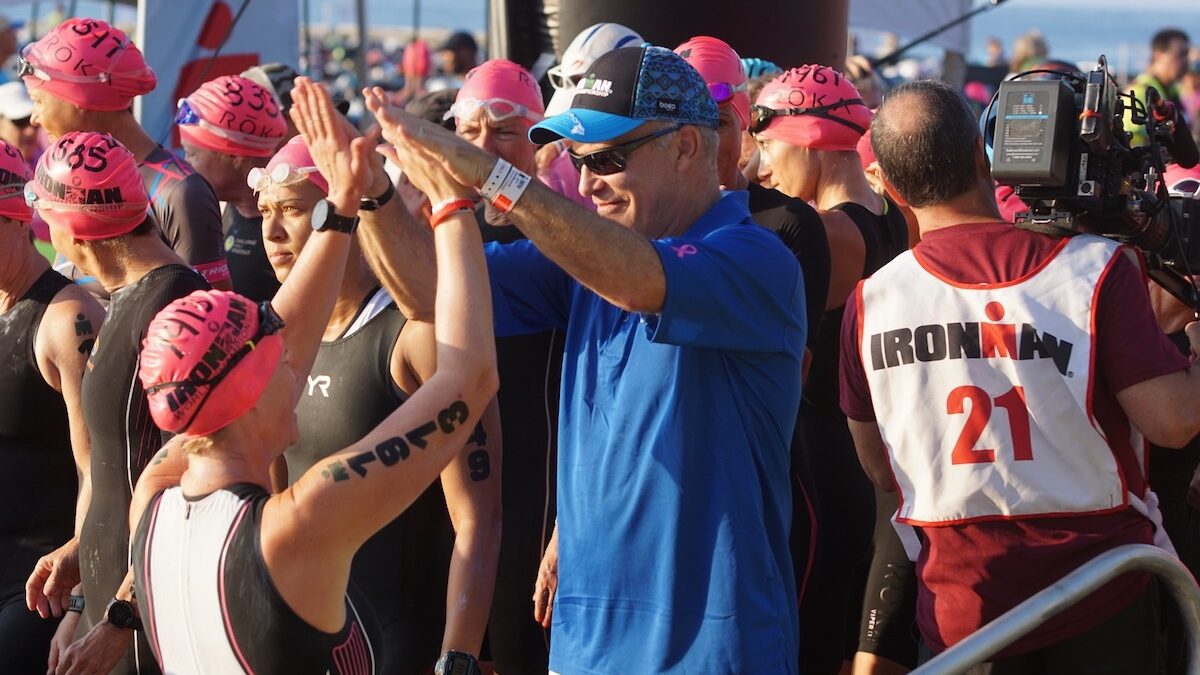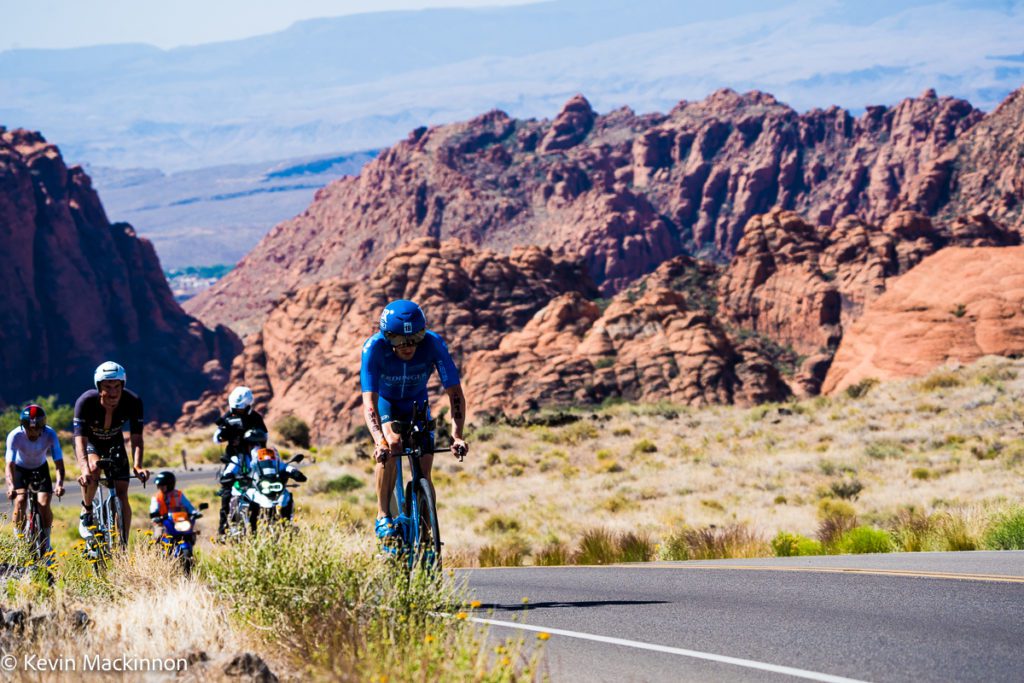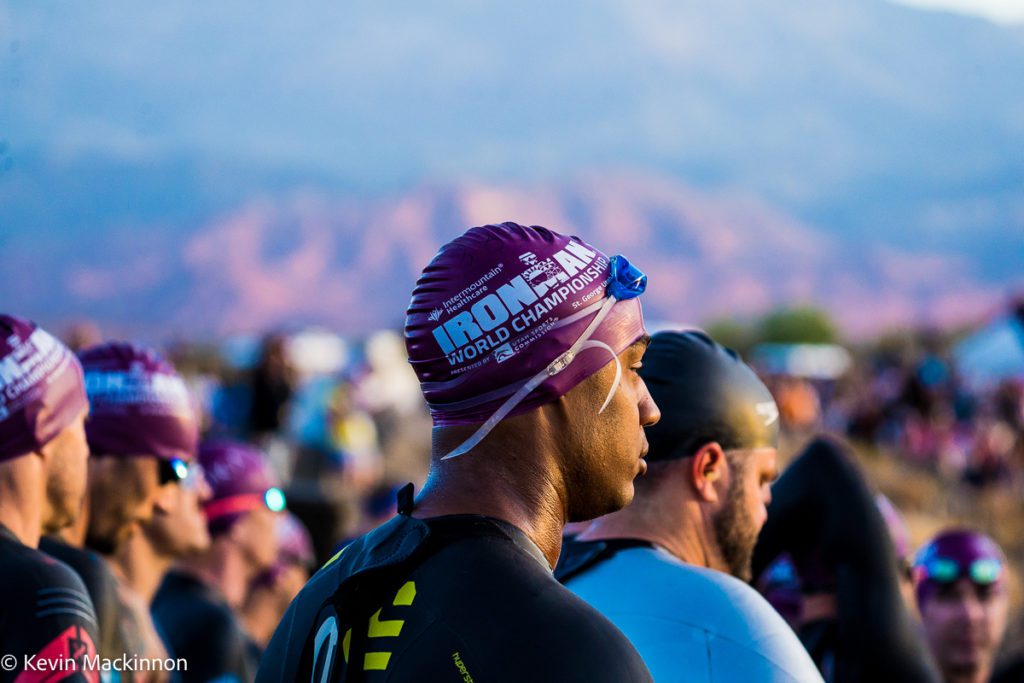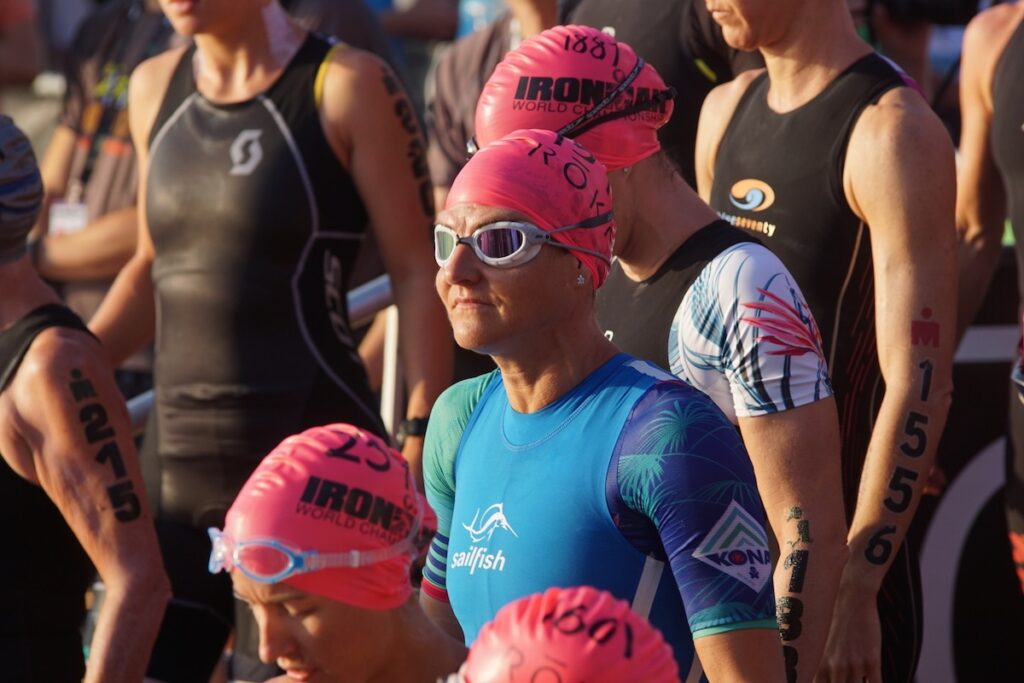Will two days of racing in Kona even the playing field for men and women?
Ironman has committed to two days of racing at the Ironman World Championship
 Photo by:
Kevin Mackinnon
Photo by:
Kevin Mackinnon
Having a “did not finish” (DNF) as your race result is something that will happen to almost every long-distance triathlete if they participate in enough races. This year’s Ironman World Championship St. George race garnered a particularly high number of DNFs – even some of the world’s fittest pros expressed how much it took out of them just to finish, much less perform at their best on race day. A cold swim, very hilly course and buffeting winds all helped make the race one for the record books. However, there is one record that may have been broken on race day that no-one was aiming for. Of the almost 3,300 official entrants in the race, over 1,000, or about 32% did not have official finish times. This puts it well above the historical average for DNFs in Ironman races which sits closer to five to 10 per cent.
What is most notable about the high rate of DNFs at this race is that they are not evenly split between the genders. Men had a DNF rate of 30 per cent, while women had a DNF rate of 38 per cent. There were no doubt many factors at play, but one was likely the structure of the race itself. While each athlete has 17 hours from their wave start time to complete the race, there were intermediate cut-off times at various points during the race that based strictly on the time of day. For example, all athletes had to reach the 95 km marker on the bike course by 2:37 PM, whether they started at 6:45 AM, like the men aged 40 to 44, or more than hour later, at 7:47 AM, like the women aged 40 to 44. Perhaps aided by the extra hour to arrive at the bike cut-off point, the men in this age group had a DNF rate of 26 per cent, while the women in this age group had a 42 per cent DNF rate. This discrepancy in DNF rates continues across many of the age groups, and is even higher for some of the older athletes, with an 80 per cent DNF rate for women aged 65 to 69, compared to a 46 per cent DNF rate for men in the same age group. On average, across all age categories, men had 48 extra minutes to reach this first cut-off time as compared to women. Although the difference in bike speed required to make this cut-off depends a bit on how fast you finished the swim, a woman who completed the swim in 90 min would have had to bike more than two km/h faster for the first 95 km of the race to make the cut-off, as compared to a man in the same age group. This amount increases to almost three km/h if you took more than two hours to complete the swim.
Starting the men first and the women last is standard at Ironman races, and in fact at most triathlons in general. To a large extent this makes sense – race organizers don’t want to have a bunch of 25-year-olds whizz past more senior athletes at 40 km/h on the bike or, maybe even worse, swim through them during the swim leg.

So why haven’t we seen this kind of disparity at other major events? Well, the already mentioned challenging course and race day environment in St. George might have been what pushed many athletes past the tipping point. In many ways, the race organizers of the world championship in St. George were in a no-win situation. The event was serving as the first full-distance world championship Ironman had been able to host since 2019. In addition to juggling a large field, the goal was to ensure a fair and safe race for the competitors.
“It should come as no surprise that the COVID pandemic significantly impacted Ironman events around the world, including the 2021 Ironman World Championship which was only able to take place in early May and in a location outside Hawaii for the first time ever,” Ironman officials said when we asked how the start order was decided for St. George. “Determining the start order for a rolling age-group wave start is always a nuanced process. No matter what the order or set up, the perfect solution does not exist, and we recognize that we will never make every athlete happy, though it is always our goal to create the best possible racing scenarios as able.”

“When deciding on a start order, Ironman attempts to balance a myriad of competing interests,” the officials continued. “With respect to the 2021 Ironman World Championship, the team worked to create a swim start order that provided a separate women’s and men’s race. In addition, we worked to start each age-group ‘together’ so that each age-group would contend with similar environmental conditions (such as lake conditions/water temperature, wind conditions, air temperature). We additionally looked at how to best minimize bike course density as it relates to creating a level playing field for each individual age-group; provides for an earlier finish time-of-day for some of the slower age-groups; provides for the safest race possible while considering collective goals; and last but not least, creates a world-class and memorable event experience that athletes expect and deserve.”
That doesn’t make it easier for the women who found themselves heading out on to the St. George course in the heat of the day as the wind picked up, though.
“I see things like this all the time,” said Sara Gross, a former professional triathlete, founder of Feisty Triathlon, “the home of women’s triathlon,” and a strong advocate for women in sport. “At the end of the day this means that it is the women who are left out in the heat of the day, or put in a position where many can’t make the cut-off. This is especially tough for the older folks out there who have trained so hard and then don’t get a chance to complete the race.”
So, with race directors feeling like they are stuck between the proverbial “rock and a hard place,” what can they do? If they start the traditionally slower athletes first, they risk bunching during the swim and congestion on the bike. These aren’t safe situations nor are they pleasant for the athletes. If they place the waves that contain the traditionally slower athletes last in the starting order, they know that some of them will come up against the hard time deadlines imposed on them by their access to the race course and end up being pulled from the event.

Two days of racing on the Big Island
Ironman looks to have a solution to this issue. When the Ironman World Championship returns to Kona in October, the race will be staged over two days, with the women’s pro race, all female age-group athletes and some of the older and smaller waves of men scheduled for Thursday. All the rest of the men will race on Saturday. Doing this means that all racers will be able to start earlier on in the day, giving everyone more time to make the intermediate cut-off points. There should also be a smaller difference in speed between the fastest and slowest athletes on either day, which will hopefully allow the race directors to set intermediate cut-offs that aren’t going to unintentionally disadvantage older female athletes.
Ironman is taking all this one step further for the race in Kona in 2023. The event on Thursday will only field women, with all the men racing on Saturday. Ironman has also added more qualifying slots for the women’s race through it’s “Women for Tri” initiative. That doesn’t mean Ironman won’t continue to analyze the race results to continue to try and improve the race situation for all the athletes.
“This does, in many ways alleviate these challenges, particularly with having all women on one day and majority of men on another for 2022, and then dedicated race days in 2023, however there will always be an age group that goes first and one that goes last,” Ironman told us. “So again, we will continue to look at how to create the best possible racing scenario as able, reducing bike density and creating a level playing field for each individual age-group. Also, as it relates to start times, the first wave is always dependent on sunrise, which, of course, varies from location and time of year. So it’s not necessarily easy to compare start times from St. George and Kona.”
That’s all great for the world championships, but what about options for other races, full-distance or not? Most events will only be staged over the course of one day so how can they adjust? Gross has a useful suggestion that can be incorporated at many races. “Why not send people off by swim time?” This would not only solve the problem of unintentionally disadvantaging certain groups, but could make the swim a safer place and potentially speed up the whole starting process. If you know all the swimmers in any wave are the same speed you could leave less space between waves, since you aren’t as worried about people catching up to those in other waves. It could also make the swim start less stressful for more hesitant swimmers since they know that they will only be swimming with those of similar skill and speed levels and won’t have to worry about faster swimmers going right over top of them. Sure, some people will miss the triathlon tradition of starting with your whole age-group in matching swim caps, but running races have been using this approach at big events for years and everyone has gotten used to it. This approach might have an additional benefit for female athletes.
“Right now, really good female swimmers are at a big disadvantage because they go off after all sorts of slow men,” Gross said. Putting all the fast swimmers together could make it easier for them to have great swims, without having to navigate through many slower swimmers who would have otherwise started before them.
Seeing the unintentional negative effects that current race procedures can have on female athletes can serve as a wake-up call for the triathlon community. There are many innovative and creative people involved at all levels of this sport and if these people want to solve this problem, they will be able to do it. In doing so, we will have a triathlon world that is more welcoming of all athletes, and give everyone a chance to have their personal best day out there on the racecourse.
Darian Silk is a triathlon coach and Clinical Exercise Physiologist based in Toronto. A longer version of this story appears in the September, 2022 issue of Triathlon Magazine Canada.
